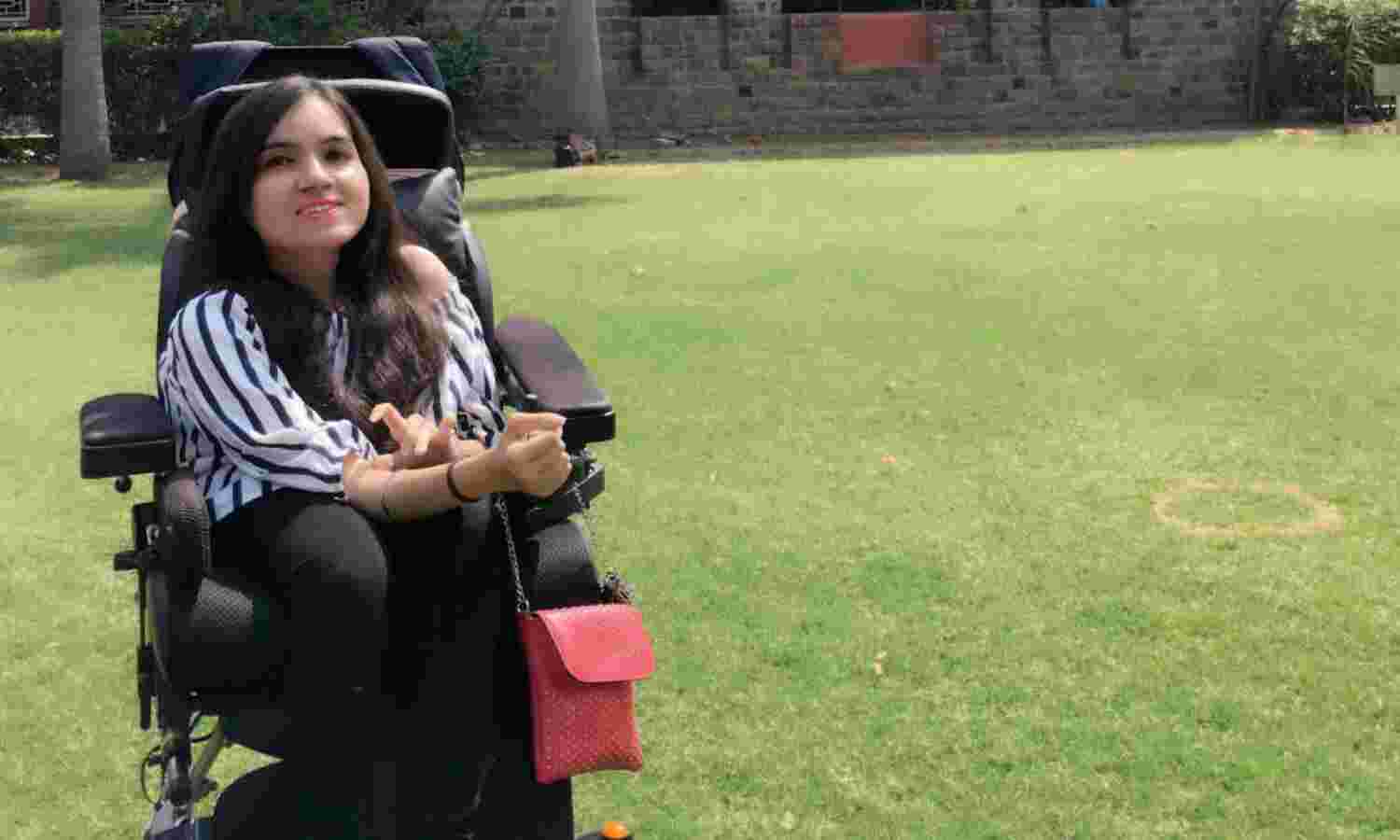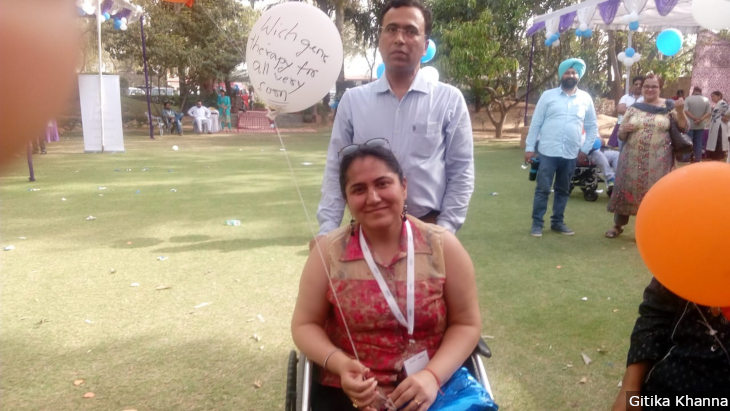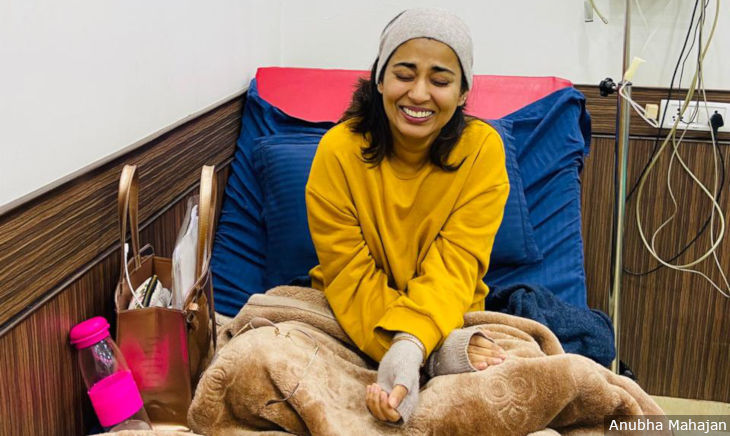How Healthcare Became Unaffordable For Non-COVID Patients During The Pandemic

New Delhi: Tanvi Vij, 22, has spinal muscular atrophy type II, a genetic disease that has left her completely immobile. This year, her condition deteriorated so much that her family decided to buy a hoist that can help her get out of bed and get on to her wheelchair.
But the government’s decision to impose a lockdown on account of COVID-19, and the cancellation of all flights, disrupted the family’s plans. Her father could not travel to Mumbai to meet the vendor and have the hoist customised for Tanvi and delivered to Delhi. This would have cost about Rs 60,000.
“So now we have to buy this hoist from a vendor in Delhi but it cannot be customised so we have to re-do my bed, mattress and wheelchair so that they are all compatible with the hoist,” said Tanvi. This exercise will cost the Vij family about Rs 1.5 lakh, more than double the cost of the hoist from Mumbai.
IndiaSpend has been reporting on how the COVID-19 pandemic has distorted healthcare costs in India. In the first part of this series, we reported on the high cost of COVID-19 treatment. In the second, we investigated how personal protective equipment for health workers can add up to Rs 10,000 a day to a patient’s hospital bills.
In this, the third part of the series, we look at how people with chronic illnesses unrelated to COVID-19 are struggling to access affordable healthcare during the pandemic. With India’s entire health machinery focussed on the pandemic that has so far claimed more than 12,000 lives in the country, and a lockdown that lasted nearly two months and continues in patches, how has the cost of healthcare changed for people with non-COVID illnesses?
Many have either been unable to access treatment or been unwilling to access it due to the fear of catching the SARS-CoV-2 infection. But those who have managed to get healthcare are finding that costs have soared since the start of the pandemic. The costs have changed in complex ways- not just the cost of treatment, but the prices of drugs and indirect costs have also increased, we found in our reporting.
The Indian government has issued a guidance document on access to essential non-COVID health services. It is essential to “minimize an increase in morbidity and mortality from other health conditions” even while there is a focus on COVID-19, says the document. As an example, it cited the 2014-15 outbreak of Ebola where an “increased number of deaths caused by measles, malaria, HIV/AIDS and tuberculosis attributable to health system failures exceeded deaths from Ebola”. It listed ways in which healthcare access for communicable and non-communicable diseases could be maintained.
The government has also issued separate guidelines about maintaining access to maternal and child health services, dialysis services, blood transfusion and tuberculosis treatment. Despite these guidelines, our reporting showed that patients with chronic and non-COVID illnesses around the country are struggling for healthcare.
Drugs are short, prices are high
For many diseases, the cost of drugs went up as access and supply declined. Swatti Bakshi, a Bengaluru-based marketing consultant who has been volunteering to help stranded migrant workers, met a man one who needed anti-epilepsy drug vigabatrin for his child. The drug needs to be taken regularly to prevent seizures. Bakshi contacted pharmacies around India and found it in short supply. Pharmacies that had the drug were selling it at a high price: One strip of 10 vigabatrin tablets that normally costs around Rs 450 was selling at Rs 700 by February, and at Rs 3,500 by April. One batch of the medicine imported by Sanofi from Singapore into India cost about Rs 1,750 a strip.
Bakshi found that many Indian families were struggling to procure this drug. “It seems to be moving around only in the grey market,” she said. People said they were asking friends and acquaintances in Bangladesh, Dubai, Singapore and Hong Kong to send a few strips of the drug whenever possible. The all-India network of volunteers looking for this drug somehow managed to distribute it to families in need.
“Due to flights and imports being stopped during the lockdown, this drug ran out in India,” said Bakshi. “Although this drug is made in India by one company, it is only for export. Families here have been forced to buy it at increased prices during the pandemic.”
Tocilizumab, a drug supplied only by the pharmaceutical company Roche and its subsidiary Genentech, helps tackle the immune system overreaction sometimes seen in COVID-19 patients. Several documents from the central and state governments in India acknowledge that it is being used in India, including the most recent clinical management protocol for COVID-19, which says that it can be used off-label (for unapproved indications) in India.
However, when Delhi entrepreneur Rajiv Dhawan tried to source it for his 65- year-old uncle in Ahmedabad who was COVID-19 positive, he found suppliers charging between Rs 32,000 and Rs 1.4 lakh for a single vial. “Vendors were contacting me offering this injection at various prices--this means that though it seems like the injection is not available, it is being sold in the black market at very high prices,” said Dhawan.
The family had to buy three vials of this injection and paid Rs 25,000 for the first, Rs 42,000 for the second and Rs 32,000 for the third.
‘Can’t afford medicines now’
Gitika Khanna and her husband have stopped taking many of the drugs they need, because they cannot afford the increased prices during this pandemic. Khanna has limb-girdle muscular dystrophy and cannot move without assistance. Her husband has recently survived cancer. Both of them are dependent on a number of medicines that have to be taken daily to manage their diseases, the pain and the side-effects of other drugs. Her husband lost his job earlier this year and the family can no longer afford to buy these medicines.

Gitika Khanna and her husband at a public event. They both need to take medicines daily for various health issues but the lockdown meant they could no longer buy discounted medicines. They both have to skip medicines to keep their expenses low now.
“We used to buy our medicines at a discounted price in bulk from Bhagirath Palace in Delhi which has a wholesale market for drugs,” said Geetika Khanna. “Now because of the lockdown we have not been able to go to the market so we are buying some from the local chemist. Here, it is sold at the maximum retail price and we don’t get any discount.”
Her husband has stopped taking his medicines and Khanna takes hers only on alternate days to cut costs.
Expensive alternatives to hospital care
Anubha Mahajan’s monthly healthcare expenses have tripled--from Rs 50,000 to about Rs 1.5 lakh--during the pandemic even though she is not able to access a hospital.
Mahajan has complex regional pain syndrome, which means that she deals with levels of unrelenting pain that exceed those caused by cancer. Her body does not accept oral painkillers anymore and she needs to be admitted to a hospital for emergency treatment. She also needs to take ketamine infusions to deal with the pain and other symptoms of her illness.

Anubha Mahajan experiences pain levels higher than even those caused by cancer. She needs regular access to hospital care but because of the pandemic, she has had to hire a home-nurse instead, escalating her monthly medical expenses.
“The lockdown has broken my whole system,” said Mahajan. Without the treatment, she has started to lose mobility in some limbs and her speech is getting garbled. During the lockdown there were instances when she has passed out from pain. “I am speaking to you right now, while dealing with a painful muscle spasm in my body,” she said on the phone.
Given that she cannot access a hospital during this pandemic, she has hired a home-nurse who administers intravenous pain medication. There are mental health costs, too. “My regular psychologist continues to charge Rs 2,000 per session even though these sessions are now online,” said Mahajan. “I had to tell her that I was considering stopping my sessions with her because I was paying so much for other aspects of my healthcare.” All of this has taken Mahajan’s monthly health expenses to Rs 1.5 lakh.
IndiaSpend earlier reported on the case of a 76-year-old man in Mumbai who had to pay about Rs 39,000 for just one session of dialysis, apart from Rs 10,000 for an ambulance. This was 15 times higher than what he was paying for a session before the pandemic, when he paid Rs 2,500 per session.
In spite of the government’s specific guidelines for the treatment of dialysis patients, this case IndiaSpend reported on shows that they are not being taken seriously. “Patients on regular dialysis should adhere to prescribed schedule and not miss their dialysis sessions to avoid any emergency dialysis,” says the guideline for dialysis. The document even asks health officials to organise transport for patients to reach dialysis facilities.
Non-COVID patients struggle globally
"People's non-COVID health conditions like heart attacks and strokes, will have worsened because of delayed access to healthcare in this pandemic,” said Sonali Vaid, a public health professional based in Delhi. “When they finally access healthcare, the costs will be higher because their conditions will have worsened.” For example, she pointed out, a diabetic patient who could not get routine health checks during the lockdown is more likely to need intensive care if she gets COVID-19, driving up her healthcare costs.
"We may not have been 100% able to solve the access issue but governments could have been less arbitrary about it: There has to be a balance between the COVID crisis and routine healthcare,” said Vaid.
This lack of access to critical healthcare during the pandemic is not unique to India. For example, ProPublica in the US, which had requested the death data from major metropolitan areas, found a huge increase in the number of people dying at home. The investigation found that these could be COVID-19 patients who did not seek treatment or those with other ailments who could not or would not access healthcare. A report in The New York Times spoke of those with non-COVID illnesses as the “pandemic’s hidden victims”.
“Prevention and treatment services for noncommunicable diseases (NCDs) have been severely disrupted since the COVID-19 pandemic began”, especially in low-income countries, said a survey by the World Health Organization (WHO) that addressed the issue of non-COVID illnesses in June. “Many people who need treatment for diseases like cancer, cardiovascular disease and diabetes have not been receiving the health services and medicines they need since the COVID-19 pandemic began,” said Tedros Adhanom Ghebreyesus, director-general of WHO. “It’s vital that countries find innovative ways to ensure that essential services for NCDs continue, even as they fight COVID-19.”
(Bhuyan is a special correspondent at IndiaSpend.)
We welcome feedback. Please write to respond@indiaspend.org. We reserve the right to edit responses for language and grammar.


